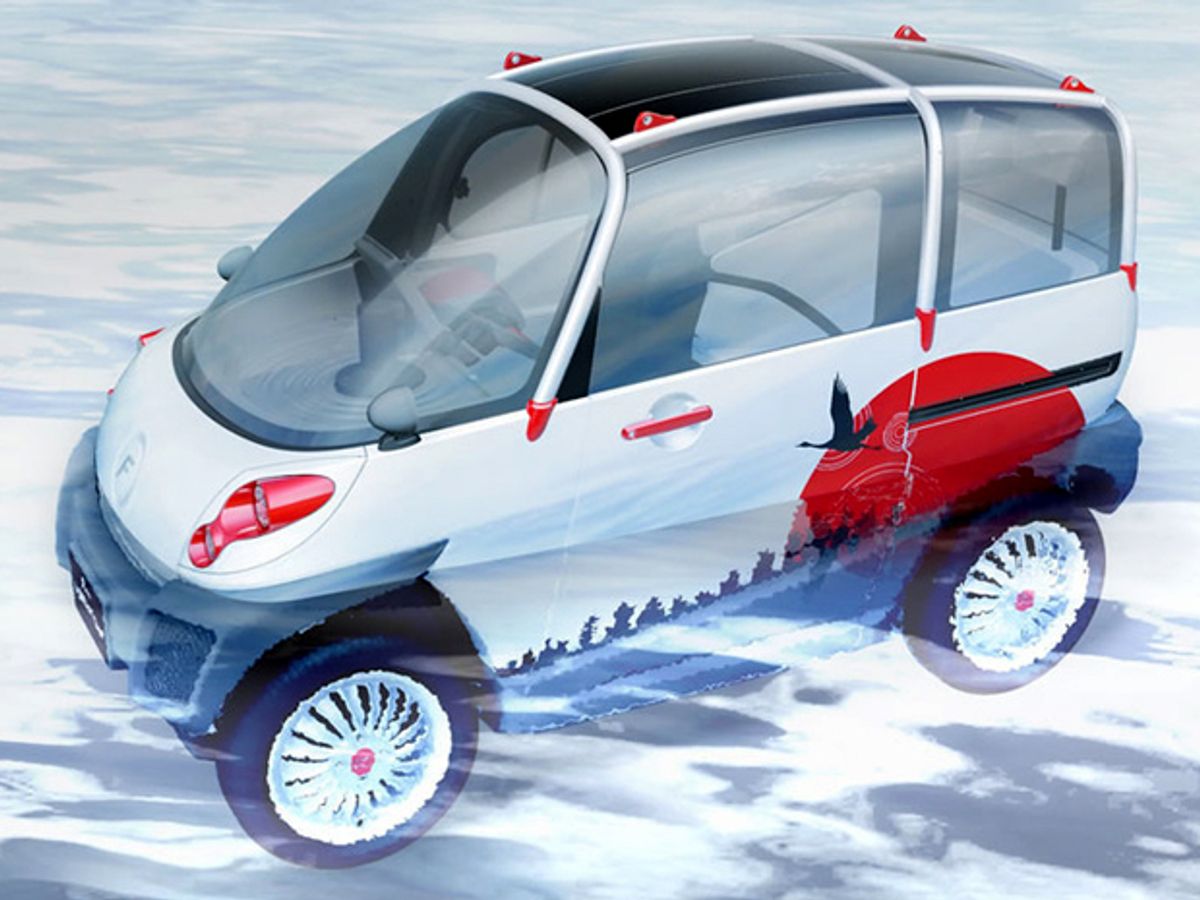When disasters strike, people are often stranded until specialized transport comes to the rescue. When you think of missions that are deployed after floods, hurricanes and tsunamis, what comes to mind is usually military helicopters, people in small nimble boats, and rugged vehicles.
One Japanese company, however, wants to make a 460-kilogram, all-electric, floating car the vehicle of choice in low-lying, flood-prone regions. The car is targeting the Asian market, but the most recent report from the UN’s International Panel on Climate Change found that there are more regions across the globe that face an increasing number of heavy precipitation events. The frequency and intensity of such heavy rain events is likely increasing in North American and Europe, the report notes.
While a floating, no-emissions car sounds cool, it is unclear how the vehicle, the Fomm Concept One car, would actually fare in a large-scale disaster.
The idea for the amphibious vehicle, which has a water jet generator to propel it through water-covered roads, came after the company’s president, Hideo Tsurumaki, saw the devastation caused by the tsunami that hit Japan in 2011, according to Grist.
But the car is likely to take range anxiety to a whole new level. The Concept One is not unlike other small all-electric vehicles that run on lithium ion batteries, but for trips across water-ravaged territories, its 100-kilometer range could be very limiting indeed.
The car would have to be fully charged ahead of a disaster. It would also need to be in a location that already has electric vehicle charging infrastructure and yet also not too far from where the disaster strikes, unless it was brought in by another vehicle, such as a flatbed truck.
Although a fleet of cars could operate through extended hours, it’s unlikely that electrical infrastructure would be available to recharge cars once battery levels are running low in the case of a widespread emergency.
If the car actually needs to turn into an amphibious vehicle, it will require some maintenance work afterwards, Fomm warns. The company has yet to specify exactly what that will entail or just how much floating it can do before needing a stop off at a service station.
According to AutoBlog Green, the floating function is only for emergencies and the company noted that the car’s movement is limited when it’s floating. If the car was completely submerged by severe flooding, it sounds it might not be of much use at all afterwards.
Lastly, the car is small. It’s billing itself as the “world’s smallest class four-seater electric vehicle.” But in reality it’s smaller than Daimler-Benz’s Smart car. So, in the case of an emergency, you might only be helping the one or two other people you could shoehorn into the tiny passenger cabin.
There are plenty of other technology breakthroughs that could be far more practical in disaster recovery, such as cyborg cockroaches, robot snakes and bouncing balls.
Although it’s billed as a “water-world spaceship,” the Fomm concept car is probably more useful in areas where there is minor road flooding on a regular basis, rather than a solution for an actual watery world.
Fromm expects commercial production of the car to begin in 2015.



